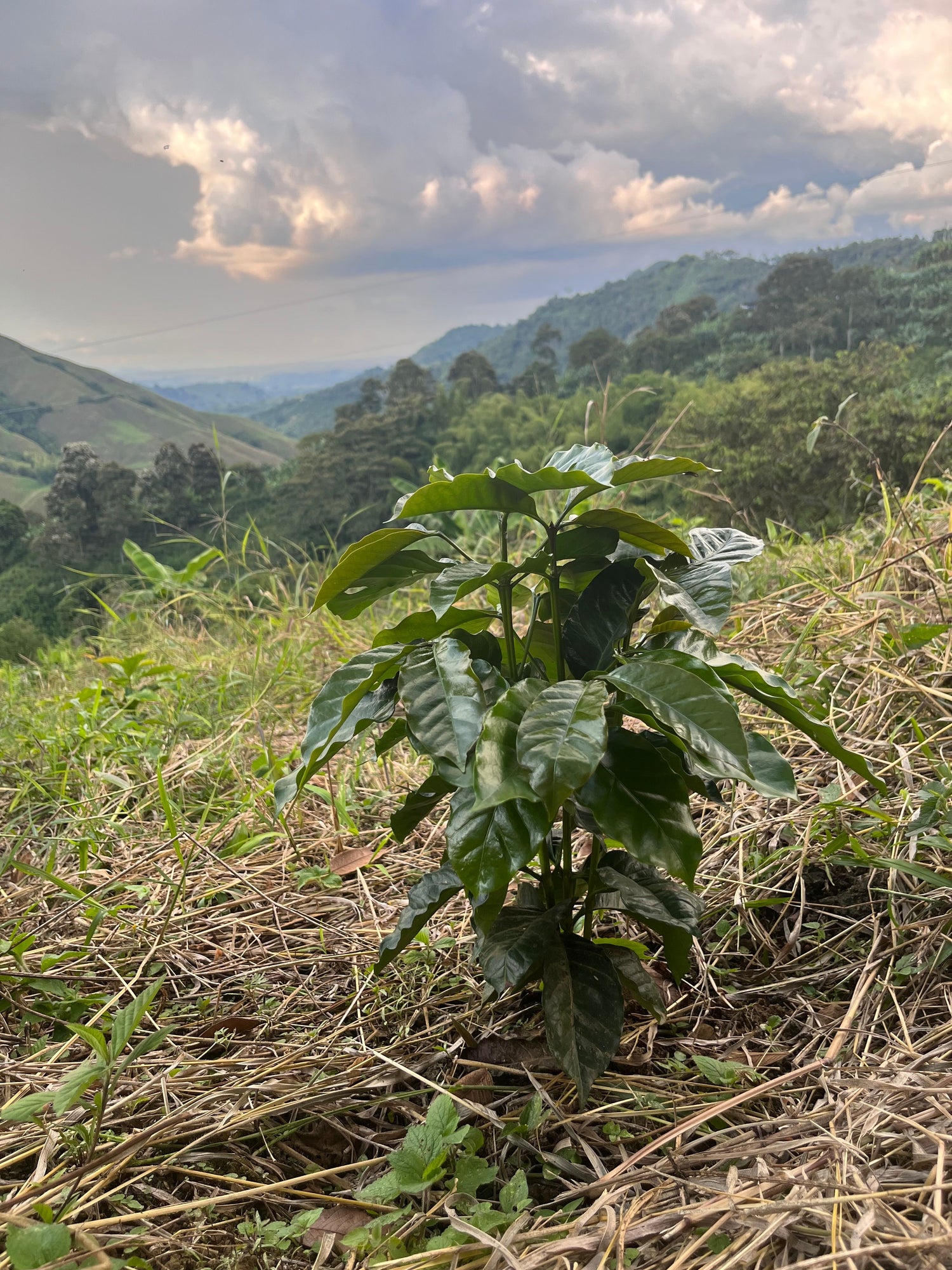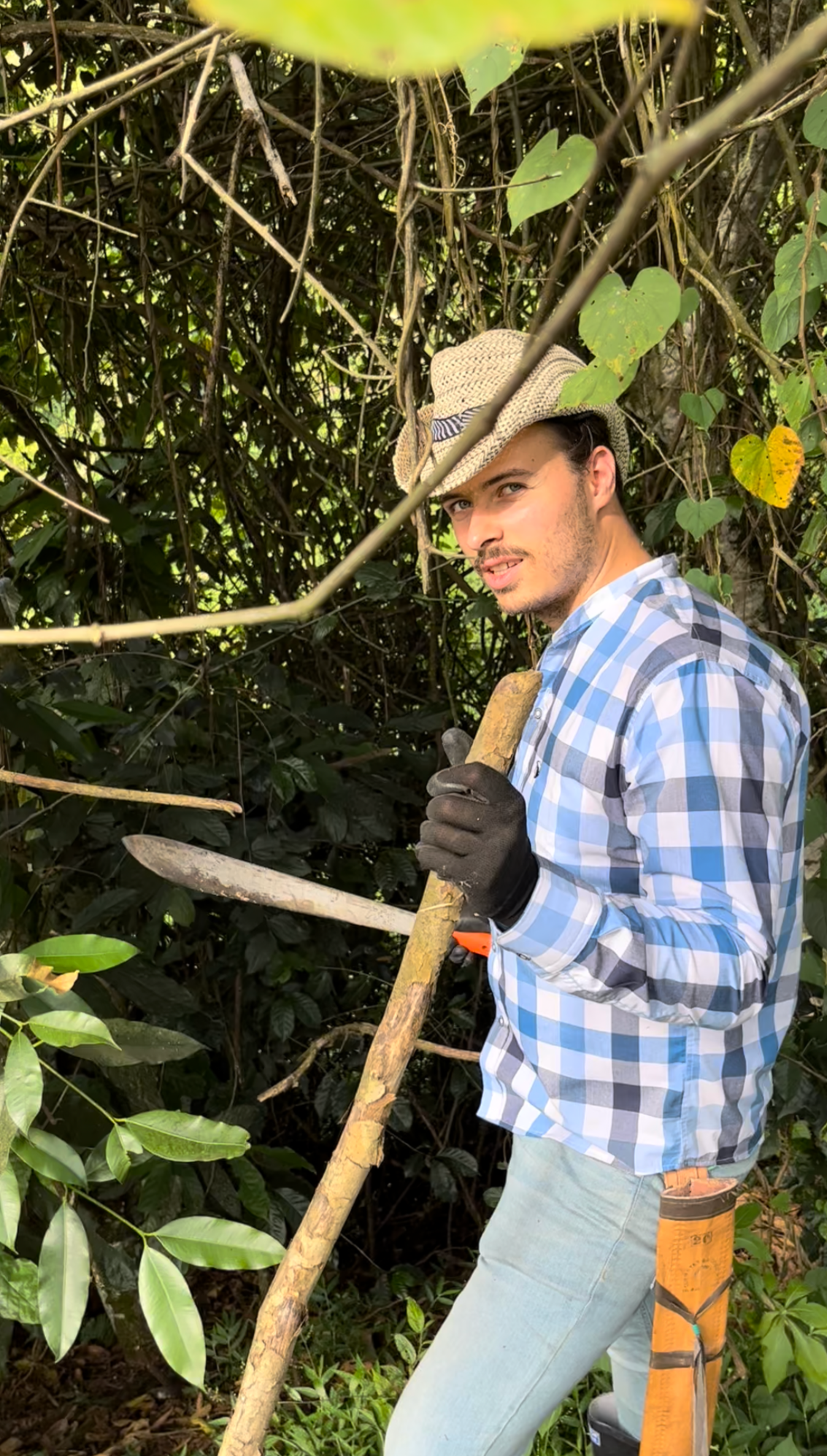The most important tradition to start each day: a cup of “tinto-campesino”, the typical Colombian coffee of the rural population. It is very dark, but is cooked together with “agua-panela” (the juice of sugar cane). This makes the tinto-campesiono very sweet.
The sun rises shortly before 6 a.m. The working day begins at sunrise. The time when the equatorial sun is not yet so strong must be exploited. The first person on the front line is the "administrador", the foreman who is responsible for the finca. On our finca " La Macarena " this is Kevin.

The administrator carries out a routine round. Is the water tank full, are the water hoses OK? Are the animals OK? Are there any sick plants? Which plants have ripe fruit? Has it rained enough? Where does watering need to be done? There are many things that need to be checked daily.
The work is divided up based on the tour. Depending on the season, this involves watering the coffee plants, caring for the plants and animals, removing unwanted weeds or planting new coffee plants. During the harvest season, the focus is on picking ripe fruit and coffee cherries and then processing the coffee cherries into green coffee.
Repair work is constantly being carried out on the finca's infrastructure. The water tank needs to be cleaned, something is broken on the roof, a water pipe is blocked. Bamboo supports are rotten and need to be replaced. There is always something to do.
After a few hours there is a rich breakfast, usually consisting of fresh "arepas" (Colombian wheat bread) and eggs. Plus some fresh tropical fruit and the inevitable tinto campesino. On our finca this is prepared by Oscar's family, who live with him on the finca.

When the midday sun burns later in the day, people seek shelter inside the finca. Lunch is served, again prepared by the administrator's family. On some fincas, the administrator himself also prepares it, and he mainly looks after the workers.
In the late afternoon, work is over. The workers either go home or stay. The fincas are often in remote places in the middle of the Andes. There is no public transport. Therefore, most workers decide to stay on the finca. They are then provided with beds.
In the evening everyone comes together, drinks more coffee, plays games and, above all, talks a lot.
If life on a coffee plantation fascinates you as much as it does us, is there anything stopping you from experiencing it for yourself?
We invite you on an exciting journey to our finca "La Macarena" in Colombia. Here you can feel closer to your coffee than ever before. An unforgettable and enriching experience for many of our guests.

But there is never really a final day on a finca. Something can always happen. Work is also carried out at night if necessary. Something needs to be repaired on the house, the animals need to be fed, etc.
Future plans and ideas for the next few days are created under a clear starry sky that invites you to dream. Boredom never sets in. At least not on the “La Macarena”.
At first, this all sounds almost idyllic. However, there are also some major challenges in growing coffee in Colombia . On our trip through the coffee country of Colombia, we became aware of this. Therefore, we decided to buy a finca there in order to have a direct influence on the ground and to be able to understand the challenges even better. In our project, we will tackle these challenges at their root and bring consumers and the country of origin closer together.
We work with the people in our region to create long-term prospects. How can you help? By buying the coffee directly from these great people. We help you make this connection, check it out!






